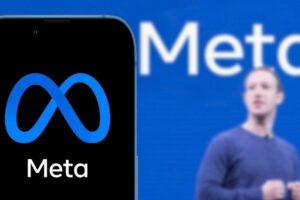Two Undergraduate Students Create an AI Speech Model to Compete with NotebookLM

Innovative AI Model for Podcast-Style Clips
Introduction to the New AI Model
Two undergraduate students, with limited backgrounds in artificial intelligence, have recently developed an AI model capable of generating podcast-style audio clips. This model, called Dia, is similar in functionality to Google’s NotebookLM and is now available for public use.
Growth of the Synthetic Speech Industry
The demand for synthetic speech technology is rapidly increasing. Companies such as ElevenLabs are prominent players in this field, but numerous other startups like PlayAI and Sesame are emerging as competitors. In fact, PitchBook reported that startups focused on voice AI technology raised more than $398 million in venture capital funding last year alone. This highlights the considerable potential investors see in these emerging communication tools.
The Creation of Dia by Nari Labs
Founders and Inspiration
Toby Kim, along with his co-founder based in Korea, started exploring the realm of speech AI three months ago. Their motivation stemmed from a desire to enhance user control over the generated audio, aiming for an easier scripting process while keeping the creation of realistic dialogues in mind.
Training and Features
To refine Dia, they utilized Google’s TPU Research Cloud, which provides free access to Google’s TPU AI chips for researchers. The model comprises 1.6 billion parameters, enabling it to generate conversational audio easily from written scripts. Users can personalize speaker tones and add nonverbal cues such as coughs and laughter, enhancing the realism of the dialogue.
Technical Specifications
How Dia Works
Dia is accessible through platforms like Hugging Face and GitHub, allowing it to run on most modern computers with at least 10GB of VRAM. By default, the AI generates a unique voice unless given specific style instructions, and it possesses capabilities for cloning existing voices.
Performance Evaluation
A recent trial of Dia by TechCrunch involved using Nari’s web demo. The results showed Dia could effortlessly create two-way conversations on various topics. The voice quality was competitive with existing tools, and the voice cloning feature was noted for its user-friendliness.
Potential Risks and Ethical Considerations
Concerns Regarding Misuse
Despite its abilities, Dia lacks robust safeguards against misuse. This leaves an opening for individuals to create misleading content or scams easily. Nari Labs has warned against using Dia for impersonation or deception but acknowledges that they cannot monitor or prevent misuse.
Data Usage Transparency
Nari Labs has not made public the datasets used to train Dia. There are concerns that copyrighted material could have been included in the training process. For example, a user pointed out that one generated sample closely resembled the voices from NPR’s podcast "Planet Money." The question surrounding the legality of using copyrighted content for training AI models is a nuanced topic. Some companies argue that their practices fall under fair use, while content creators often disagree, insisting that such use infringes on their rights.
Future Developments and Goals
Plans for Expansion
Looking ahead, Nari Labs has aspirations to create a broader synthetic voice platform that incorporates social elements beyond what Dia offers now. There are also intentions to publish a technical report on Dia and expand its functionalities to support languages outside of English, which would enhance its accessibility and usability.
The emergence of Dia and similar models shows the rapid development in AI technology, particularly in the field of synthetic speech, bringing exciting possibilities alongside significant ethical considerations.






